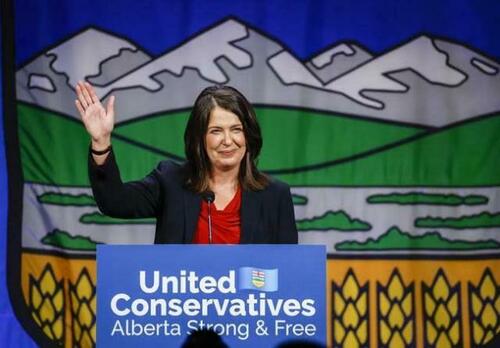I’ve now had a chance to review the oral argument in the Students for Fair Admission v. University of North Carolina. I started to review the Harvard case, but didn’t get a chance to finish it yet. My immediate impression to the UNC case: every Justice came to the argument with their minds made up. I don’t think such predetermination was surprising. But I was struck at how settled the Chief Justice, as well as Justices Kavanaugh and Barrett were. I expected each of them to express some discomfort with what the Plaintiffs were asking for. But I sensed none. To be sure, Kavanaugh in particular had already figured out his limiting principles–more on that later. But the lawyers had very little room to sway the Court’s swing votes. Since there was very little interchanges on the bench, this post will review the positions of each justice.
Chief Justice Roberts
I often pay careful attention to the Chief’s questions for the conservative side. He often throws them a curveball, and signals some alternate saving construction he might adopt. But there was no middling from Roberts here. He came to play. Early on, Patrick Strawbridge (counsel for SFFA) raised a hypothetical about an Asian American student who discusses his heritage in application essay. There was some cross-talk with Justice Sotomayor and Justice Kagan, but the Chief Justice pushed through:
they also show a pretty –not very savvy applicant, right? Because the one thing his essay is going to show is that he’s Asian American, and those are the people who are discriminated against.
The University vigorously contests this premise, but the Chief stated this point without any equivocation.
Roberts repeatedly faulted the Universities for failing to set an end date.
CHIEF JUSTICE ROBERTS: I don’t see how –I don’t see how you can say that the program will ever end. Your position is that race matters because it’s necessary for diversity, which is necessary for the sort of education you want. It’s not going to stop mattering at some particular point. You’re always going to have to look at race because you say race matters to give us the necessary diversity.
I did a radio interview on Monday afternoon, and blurted out: “racial preferences today, racial preferences tomorrow, racial preferences forever.” I didn’t realize till afterwards that I unconsciously parodied George Wallace’s inaugural address: “segregation today, segregation tomorrow, segregation forever.”
Roberts also pushed the attorneys on whether the universities can pursue other race-neutral approaches–of course they can. Given Roberts’s perspective on strict scrutiny, this line of questioning does not bode well for the respondents. Roberts also asked many questions about the race “check box.” I can see one possible holding is that the universities are not allowed to consider the “check box.”
Justice Thomas
Justice Thomas usually asks questions to help him draft a separate writing. Here, he asked several times if the advocates could provide a definition of “diversity.” As anyone in academia can attest, the word means whatever you want it to mean–except for ideological diversity, which is not important.
JUSTICE THOMAS: Mr. Park, I’ve heard the word “diversity” quite a few times, and I don’t have a clue what it means. It seems to mean everything for everyone.
Thomas repeated his charge from Grutter and Fisher that the arguments in favor of racial preferences mirror the arguments made by segregationists:
JUSTICE THOMAS: Well, I guess I don’t put much stock in that because I’ve heard similar arguments in favor of segregation too.
Justice Thomas also asked at several points about the burden of proof in a Title VI case. The lawyer for the students even suggested that the caselaw is unclear about who bears the burden. No matter what the Court decides, the level of deference will be significantly ratcheted down, and the universities will bear the burden of proof.
Justice Alito
Justice Alito apparently reviewed David Bernstein’s amicus brief, prepared by Cory Liu. He asked about the status of an Afghani student:
What –what similarity does a family background to the person from Afghanistan have with somebody whose family’s background is in, let’s say, Japan?
The North Carolina Solicitor General had no response. He could only repeat, on loop, that each student is considered as an individual based on a holistic analysis. Alito fired back, somewhat irritated:
JUSTICE ALITO: Well, then why do you have them check a box that I’m Asian? What do you learn from the mere checking of the box?
MR. PARK: So we think that it depends on the individual circumstances of that person, but I am telling –
JUSTICE ALITO: So you don’t need the –you don’t need the boxes at all?
Alito pursued a similar line of questioning about self-reporting. What if a person has a single black grandparent, great-grandparent, great-great-grandparent and so on. Alito also seemed to invoke the Elizabeth Warren example, where “family lore” tells of an Indian ancestor. (Alito did not ask about high cheekbones.) At some point, we are veering into the one-drop rule. Again, the lawyer for UNC could not reply, as none of these claims are verified. Everything is self-reported.
Justice Sotomayor
According to Joan Biskupic, Justice Sotomayor was able to flip the votes in Fisher I by circulating a vigorous dissent. (Ultimately, she published the “race matters” tractate in her Schuette dissent.) That strategy will no longer work. There are not five votes for her position. Instead, Sotomayor focused a lot of her attention on the district court record, and the nuts-and-bolts of writing a majority opinion. Justice Sotomayor, at several junctures, repeated that race was not a “determinative” factor.
But isn’t that what this plan in UNC already does? Race is never the determinative factor. That was a finding by the district court.
If –if race is only one among many factors, how can you ever prove, given that the district court found against you, that it’s ever a determinative factor?
And we’re doing all this because race is one factor among many that is never solely determinative, correct?
I don’t think the findings of two district court judges will control the Court’s resolution of this case. And at one point, Sotomayor seemed confused about which case she was asking about:
MR. STRAWBRIDGE: Well, of course, there’s an e-mail exchange in the record, some of which is sealed, but I think that the Court’s familiar with its contents that –
JUSTICE SOTOMAYOR: That was one person and not the entire committee.
MR. STRAWBRIDGE: It was a –it was a –I think it was a chat between three people –
JUSTICE SOTOMAYOR: Well –
JUSTICE JACKSON: Did that support each point –
MR. STRAWBRIDGE: –who were all admissions officers.
JUSTICE SOTOMAYOR: –it’s a 40-member committee.
JUSTICE JACKSON: –as a result?
JUSTICE SOTOMAYOR: Or is that the Harvard case? I’m sorry. It might be the Harvard case.
Justice Sotomayor’s colloquy with Solicitor General Prelogar on pp. 154-156 was fairly one-sided. I counted about then consecutive questions to which Prelogar simply responded “That’s correct” or “I agree” or “Yes.”
Justice Sotomayor suggested that there is still de jure segregation today:
-JUSTICE SOTOMAYOR: So, even if we have de jure discrimination now or segregation now, Congress can’t look at that? Because we certainly have de jure segregation. Races are treated very differently in our society in terms of their access to opportunity.
A moment later, Justice Alito interjected:
JUSTICE ALITO: Are you aware of de jure segregation today?
Cam Norris, lawyer for SFFA in the Harvard case, said there was not.
Sotomayor interrupted, and sounded peeved.
JUSTICE SOTOMAYOR: It’s not clear that there’s segregation between there are large swaths of the country with residential segregation, there are large numbers of schools in our country that have people of just one race, there are school districts that have only kids of one race and not multiple races or not white people? De jure to me means places are segregated. The causes may be different, but places are segregated in our country.
I don’t think that is what de jure means. She is describing de facto segregation.
Throughout the arguments, the Chief Justice seemed annoyed by how Justice Sotomayor was cutting off the lawyers, and not letting them answer questions. At page 48 of the UNC arguments, Sotomayor asked Patrick Strawbridge to explain how a model works. Strawbridge replied, “I think I disagree with that for a couple reasons.” Sotomayor interrupted, and said “Well the district court.” The Chief cut her off and spoke to Strawbridge, “Why don’t you tell us what the reasons are.” After Strawbridge finished, Roberts turned to the seriatim questioning and said, “You’ll be able to return to Justice Sotomayor in just a moment.” There were no questions from Roberts, Thomas, or Alito, so Sotomayor continued her colloquy.
Justice Kagan
Justice Kagan is the most effective questioner on the Court. And she repeatedly pushed counsel for SFFA to draw a limiting principle: would they favor racial preferences if race-conscious policies yielded zero minority students. I think SFFA had to hold the line, and say no.
JUSTICE KAGAN: It really wouldn’t matter if there was a precipitous decline in minority admissions, African American, Hispanic, one or the other, you know, if –I think there are some numbers in –in this case, but, you know, suppose that it just fell through the floor.
Would it –it just –you know, too bad?
MR. STRAWBRIDGE: Well, I don’t think that it’s going to fall through the floor if the university is actually committed to the broader diversity it wants because it didn’t –
JUSTICE KAGAN: Right. I know you think that. And there’s been –obviously, a lot of the litigation has been about that, how much will it decline and your expert and their expert. But the logic of your position suggests that that really doesn’t matter.
Later, Kagan repeated the theme that racial diversity really does not matter for SFFA:
But putting that aside, I mean, I -I –I –I guess what I’m saying is your brief –and this is very explicit in your brief -is, like, it just doesn’t matter if our institutions look like America.
Kagan also seemed ticked off by the notion that schools would have more latitude to use gender-conscious measures than race-conscious measures. (The former would be subject to intermediate scrutiny while the latter would be subject to strict scrutiny).
JUSTICE KAGAN: Yeah. I mean –I mean, you’re right about the levels of scrutiny, but that would be peculiar, wouldn’t it? Like white men get the thumb on the scale, but people who have been kicked in the teeth by our society for centuries do not?
MR. STRAWBRIDGE: Well, of course, our position is that white men could not get a thumb on the scale. That sounds like a racial classification. Men could perhaps.
JUSTICE KAGAN: Men could?
MR. STRAWBRIDGE: But not white men.
JUSTICE KAGAN: Oh. Uh-huh.
Go listen to the audio of Kagan saying “uh-huh.” I’m confident there was an eye-roll.
Last term in West Virginia v. EPA, Justice Kagan suggested that the Court’s conservatives are faux-textualists. Now, she is primed to write that the majority is a bunch of faux-originalists:
JUSTICE KAGAN: I would ask on a completely different question, but one notable thing about the argument here is that on both sides there’s been very little discussion of what originalism suggests about this question.
And I –so I just want to ask, what would a committed originalist think about the kind of race-consciousness that’s at issue here?
I thought Strawbridge handled this position well in light of modern doctrine: the Reconstruction-era statutes were designed as remedial measures. Still, I hope that Justice Thomas addresses these historical arguments head-on.
Justice Gorsuch
Justice Gorsuch focused at some length on Title VI, and asked whether Justice Stevens erred in Bakke. The Solicitor General countered that the word “discriminate” in Title VI is ambiguous. In response, Gorsuch raised the (pirate) flag of Bostock!
JUSTICE GORSUCH: But where –where did Justice Stevens err?
GENERAL PRELOGAR: In not recognizing that the term discrimination in this context is ambiguous. And I think that the legislative history therefore carries –
JUSTICE GORSUCH: We didn’t find it –
GENERAL PRELOGAR: –forth in this context.
JUSTICE GORSUCH: –ambiguous in Bostock. Why should we find it ambiguous now?
GENERAL PRELOGAR: Well, I think that –I think that the statute doesn’t define –
JUSTICE GORSUCH: Were we wrong in Bostock?
GENERAL PRELOGAR: No, I’m not suggesting that. But Justice Gorsuch, I know you asked me to put to the side that –
JUSTICE GORSUCH: I did.
GENERAL PRELOGAR: –the Court has already resolved this issue. I just would emphasize –
JUSTICE GORSUCH: All right. You can go back to that.
You get the government’s position? The word “discriminate” in Title VII is not ambiguous, but the word “discriminate” is not ambiguous in Title VI. Not the best argument, but what is the government going to do?
JUSTICE GORSUCH: On the text, though, do you have anything else?
GENERAL PRELOGAR: I would point to the ambiguity in the term discrimination.
JUSTICE GORSUCH: But it’s not ambiguous in Title VII?
GENERAL PRELOGAR: No, and we respect this Court’s decision in Bostock.
JUSTICE GORSUCH: It’s just ambiguus in Title VI, the same word?
GENERAL PRELOGAR: This Court has held that multiple times.
The best Prelogar could is turn to statutory stare decisis.
Gorsuch referenced the “cottage industry” of coaches who help Asian American applicants de-Asianafy their resumes.
JUSTICE GORSUCH: Okay. What do we say to Asian Americans who there is a veritable cottage industry we’re told by the briefs that they are encouraging Asian applicants to avoid and beat “Asian quotas”? That’s how they perceive it. Is that an important consideration in
The Solicitor General was shocked, shocked, to find that there were allegations of bias against Asian-American students. Gorsuch also referenced Harvard’s history of discrimination against Jewish applicants. Seth Waxman of course vigorously repudiated those policies, but insisted that history is not relevant to the present case.
Justice Kavanaugh
Justice Kavanaugh has a terrible habit. He often writes concurrences that purport to narrow a conservative majority opinion, but in the process he reaches out to decide difficult legal questions that were not briefed. For example, in Dobbs he decided that states could not restrict a women’s right to travel to another state to obtain an abortion. And in Bruen, he lent his imprimatur to a law that requires a mental health check to obtain a carry license. Neither of these issues were presented, yet in an act of anti-modesty, Justice Kavanaugh thought best to decide them.
Kavanaugh’s very first question in the UNC case signaled what limiting principle he will adopt–or more precisely, three limiting principles.
JUSTICE KAVANAUGH: So, if they’re -if you prevail here, let’s say, and a university develops three race-neutral alternatives to consider in the wake of a decision here and they choose the one that’s going to lead to the highest number of African American students and they choose that race-neutral alternative for that reason, is that okay?
Kavanaugh didn’t get a chance at that juncture to list his three alternatives, but I (like Kagan) rolled my eyes. I knew they would come soon enough.
Later, Kavanaugh teased out two race-neutral alternatives that are in the record: socioeconomic plans and top 10% plans.
JUSTICE KAVANAUGH: Your position will put a lot of pressure going forward, if it’s accepted, on what qualifies as race-neutral in the first place. You said socioeconomic is race-neutral. Top 10 percent plan, race-neutral. Is –do you want to respond to that?
Of course, neither policy is actually race-neutral. Justice Sotomayor accurately called them “subterfuges”:
JUSTICE SOTOMAYOR: So I don’t actually see why all the race-based –because all of the alternatives, whether it’s the 10 percent plan, whether it’s socioeconomic, they’re all subterfuges to reaching some sort of diversity in race. You’re touting them as race-neutral, but none of them are race-neutral. You’re doing them because you believe in racial diversity. I just don’t understand why considering race as one factor but not the sole factor is any different than using any of those other metrics.
Strawbridge’s answer to Kavanaugh wasn’t very important. Kavanaugh was simply setting up the third option:
JUSTICE KAVANAUGH: Right. I’m just making sure what qualifies as race-neutral in the first place. What if a college says we’re going to give a plus to descendents of slaves? Is that race-neutral or not?
Kavanaugh asked the same question of Cam Norris during the Harvard case:
JUSTICE KAVANAUGH: So today a benefit to descendents of slaves would not be race-based, correct?
MR. NORRIS: I –I think that’s incorrect, Justice Kavanaugh.
From anti-modesty to anti-racism. Indeed, Kavanaugh’s position veers very close to an argument for reparations to descendants of slaves. Rather than permitting preferences for all under-represented minorities, only a single class of students would stand to benefit. Not even Justice O’Connor would go for that balkanized approach to admissions. Kavanaugh’s position would create internecine DEI strife on campuses nationwide. Hispanics, American Indians, and other groups would be left out. The technicolor intersectional pyramid would become a monochromatic obelisk, with only one racial beneficiary. Justice Scalia emphatically rejected this approach in Adarand Constructors v. Pena: “Individuals who have been wronged by unlawful racial discrimination should be made whole; but under our Constitution there can be no such thing as either a creditor or a debtor race.”
Critically, unlike with Grutter, there would be no stopping point to Kavanaugh’s position, as people could trace their lineage back to slaves in perpetuity. Cam Norris made this point:
JUSTICE KAVANAUGH: You –you said -you said, I think, to Justice Gorsuch, and I’m sorry to interrupt his question, but you said to Justice Gorsuch, I think, that the benefit for former slaves was not race-based. If that’s correct, then the benefit for descendents of former slaves is also not race-based. There -you can make other arguments if you want about that, but it does not seem to be race-based under what you said to Justice Gorsuch, correct?
MR. NORRIS: Well, not correct. I think there’s a difference between the former slaves themselves getting a benefit versus generations later. I think that’s the classification on the basis of ancestry, which is still problematic under this Court’s precedents.
Is any college in the United States taking that approach? Not to my knowledge. But this gerrymandered alternative would ensure that universities could continue to use racial preferences for most African-American applicants indefinitely. Is it legal? Patrick Strawbridge replied that the “slavery” bonus would just be a “pure proxy for race.” I agree. I hope this position does not make it into a concurrence. Justice Kavanaugh needs to stop making up arguments that none of the parties presented in landmark constitutional law decisions. No one benefits from it.
Justice Barrett
Justice Barrett seemed more settled than I expected. Her questions were thoughtful, but all seemed to lean towards SFFA. For example, she clarified that the Petitioners did not object to applicants discussing their race in an “experiential” personal statement. (Justice Sotomayor and Jackson seemed to suggest that SFFA was even opposed to considering race in the personal statement.)
Still, SFFA’s position does put a lot of weight on the essay:
JUSTICE BARRETT: I guess –I mean, I guess what I’m concerned about is if it puts a lot of pressure on the essay writing and the holistic review process. You could have viewpoint discrimination issues, I would think, depending on how admissions officers treat essays. You could have free exercise claims, not by religious mission –religiously affiliated universities who want to give bumps to, say, you know, LDS students, but, you know, if you have Harvard say –saying, well, we want this many Jews, but we also want this many Christians, you know, and –and, you know, this many Muslims in a classroom.
Strawbridge responded that Grutter did not identify campus diversity as a compelling interest. Rather, the interest was limited to the educational benefits from diversity in the classroom.
Critically, Barrett repeated the admonitions from Grutter that racial preferences were “dangerous.” (And I take it, ACB uses reading glasses–her “readers”):
JUSTICE BARRETT: This Court’s precedents, I mean, Grutter also says –sorry, let me put my readers on here –you know, using racial classifications are so potentially dangerous, however compelling their goals, they can be employed no more broadly. Going down a little bit further, all governmental use of race must have a logical end point, reasonable durational limits, sunset provisions, and race-conscious admissions policies. And I gather, you know, Justice Alito’s saying, when does it end? When is your sunset? When will you know? Because Grutter very clearly says this is so dangerous. Grutter doesn’t say this is great, we embrace this. Grutter says this is dangerous and it has to have an end point. And I hear you telling Justice Alito there is no end point.
The lawyer for North Carolina bobbed and weaved about the end point. Barrett interrupted a few times:
JUSTICE BARRETT: But, if I could just interrupt for one second, how do you know when you’re done? You know, Justice Alito said, if you have exact correlations to the member –to the number –the percentage in the population of a particular group, and you said you’re not done then. So when would the race-conscious -when would you have the end point? I appreciate that you’re undertaking all those efforts, but when is the end point?
Barrett asked about what the state would say in 2040–when Barrett will likely still be on the bench, probably seated in the first row:
What if it continues to be difficult in another 25 years? I take it that you, because you’ve repeatedly said that the 25 years is aspirational and you told Justice Kavanaugh it wasn’t a holding, that you don’t think that University of North Carolina has to stop in 25 years, at that 2028 mark. So what are you saying when you’re up here in 2040? Are you still defending it like this is just indefinite, it’s going to keep going on?
Justice Jackson
The newest member of the Court came prepared with two distinct lines of questions. First, she raised a novel argument concerning standing. The University asserts that SFFA is not a traditional member group, or at least it didn’t have any actual members when the litigation began. Thus, the government argues, there is no associational standing. But Jackson argued that the Plaintiffs cannot show an injury in fact. Why? Because, according to the district court, there was no finding that Asian American students were harmed by the admissions policy. She repeated this point at least five times in very similar terms: that a person’s race did not automatically lead to their admission, and race was not determinative.
No one’s automatically getting in because race is being used.
And even if you check the box, I’m an African American, I’m a Latino, and all the other things, I live in this place, et cetera, et cetera, even if you check that box, in North Carolina’s system, do you get a point automatically for having checked that box?
And is anybody who did check the box, are they automatically entered or admitted into the university as a result?
Minorities don’t automatically get a boost under this system, so it’s hard to know whether anyone’s being disadvantaged from the mere fact that a minority could get a boost in this environment, right?
But when you have a situation like this in which you’re talking about a holistic review, other people are getting pluses in the system, no one is automatically getting a plus in the system, I wonder if the urge to end it -and what is the end it?
A lot has been written on how much Justice Jackson talks. I think more relevant is how often she repeats herself, and makes the same points over and over again.
Strawbridge responded that an injury was found in Grutter, even though race was used in a holistic fashion. I get Justice Jackson’s argument, but it seems undermined by Grutter.
JUSTICE JACKSON: –can you help me?
MR. STRAWBRIDGE: I’m sorry.
JUSTICE JACKSON: Yes, please.
MR. STRAWBRIDGE: Even –even –even Grutter establishes that a holistic admissions process doesn’t make the injury go away.
JUSTICE JACKSON: But you’ve said Grutter needs to be overruled. So we can’t –I don’t think we can use that decision as the basis for standing.
The plaintiffs do not want to overrule the standing analysis from Grutter. I don’t think this standing argument will go anywhere.
Justice Jackson’s second line of questioning was much more powerful. If the plaintiffs prevail here, universities would be able to consider applicants on the basis of everything but race. Jackson suggested that the university could fairly consider certain points in a white student’s application, but could not consider related points in a black student’s application. This disparate treatment, Jackson said, could violate the Equal Protection Clause:
And so what I’m worried about is that the rule that you’re advocating, that in the context of a holistic review process, a university can take into account and value all of the other background and personal characteristics of other applicants, but they can’t value race, what I’m worried about is that that seems to me to have the potential of causing more of an equal protection problem than it’s actually solving.
Justice Jackson raised two hypotheticals, the second of which dovetailed with Justice Kavanaugh’s proposal to give preferences to descendants of slaves
The first applicant says: I’m from North Carolina. My family has been in this area for generations, since before the Civil War, and I would like you to know that I will be the fifth generation to graduate from the University of North Carolina. I now have that opportunity to do that, and given my family background, it’s important to me that I get to attend this university. I want to honor my family’s legacy by going to this school. The second applicant says, I’m from North Carolina, my family has been in this area for generations, since before the Civil War, but they were slaves and never had a chance to attend this venerable institution. As an African American, I now have that opportunity, and given my family –family background, it’s important to me to attend this university. I want to honor my family legacy by going to this school. Now, as I understand your no-race-conscious admissions rule, these two applicants would have a dramatically different opportunity to tell their family stories and to have them count. The first applicant would be able to have his family background considered and valued by the institution as part of its consideration of whether or not to admit him, while the second one wouldn’t be able to because his story is in many ways bound up with his race and with the race of his ancestors. So I want to know, based on how your rule would likely play out in scenarios like that, why excluding consideration of race in a situation in which the person is not saying that his race is something that has impacted him in a negative way, he just wants to have it honored, just like the other person had their personal background family story honored, why is telling him no not an equal protection violation?
My immediate reaction to this position was Schuette. In that case, the plaintiffs argued that the ballot referendum violated the so-called political process doctrine. People could advocate that universities make all sorts of changes to the admissions process through normal electoral channels. But it would take a state constitutional amendment to remove the prohibition on racial preferences. Of course, the plaintiffs in Schuette lost. Justice Jackson’s argument harkens to that sort of disparate treatment. I’m not sure Equal Protection is the precise frame. Accordingly, Strawbridge replied that universities would have to review the applications in a race-neutral fashion, so there would not be a violation of the Fourteenth Amendment.
MR. STRAWBRIDGE: Well, for purposes of the hypothetical, I am assuming that the only significant factor in that story happens to be the fact of the race of the applicant and that the race was previously barred from attending UNC. Obviously, nothing stops UNC from honoring those who have overcome slavery or recognizing its –its –its past contribution to racial segregation.
But the question is, does –is that a basis to make decisions about admission of students who are born in 2003? And I don’t think that it necessarily is. I don’t think that the Equal Protection Clause suggests that it is.
This response also effectively replies to Justice Kavanaugh’s proposal.
***
I will have more to say after I have some time to review the Harvard case. I apologize in advance for typos. I did not have as much time as I would have liked to carefully proof the post.
The post Review of Oral Argument in <i>Students for Fair Admission v. University of North Carolina</i> appeared first on Reason.com.
from Latest https://ift.tt/XhI31y9
via IFTTT














